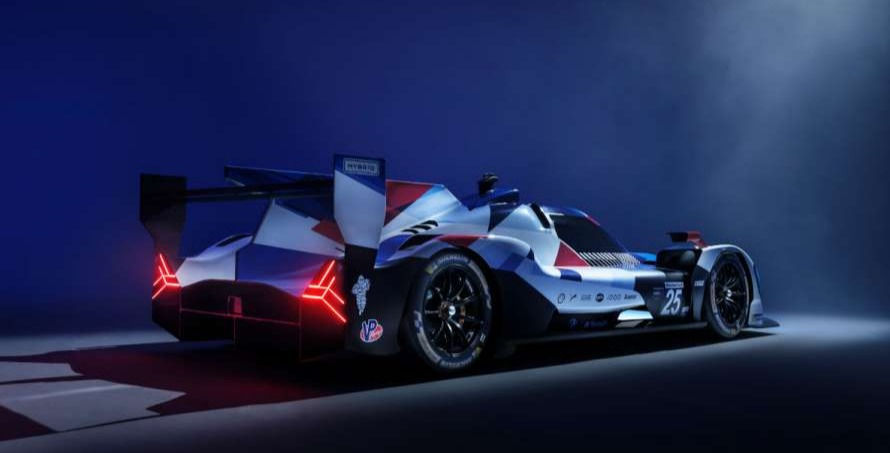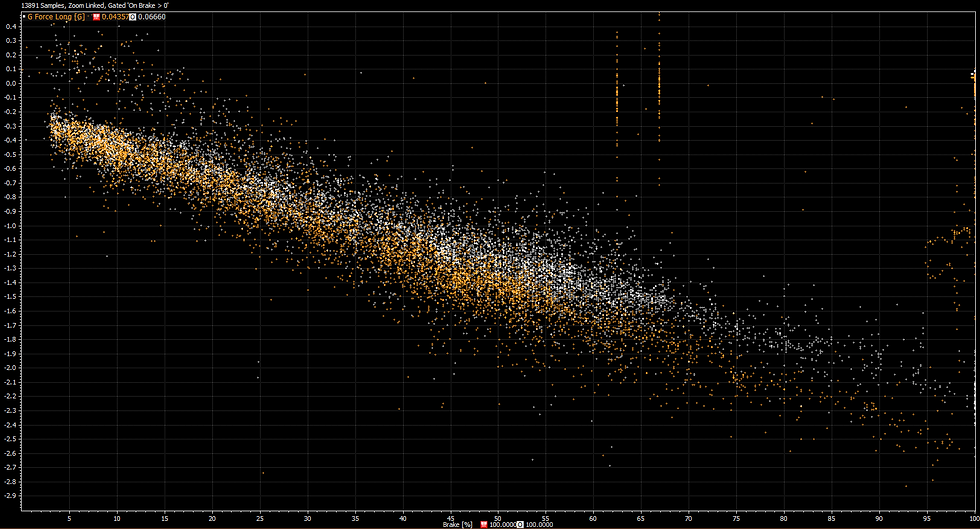BMW LMDh First Taste
- Sam Dignan
- Dec 8, 2022
- 5 min read
This week iRacing released a new top level prototype in the BMW LMDh. It is for sure the hot new thing on the service, I have seen a lot of people streaming in it the past few days. I believe it will be replacing the LMP1 cars that I have been driving so I would need to start learning sooner or later.

This evening I was able to sit down and give it a try for the first time, check out the stream on my YouTube page. I ran an individual test session at Road Atlanta, conditions were sunny with track temperatures in the high 30s C to low 40s C.
This car is based on the Dallara LMP2 chassis with a BMW V8 and a MGU-K hybrid system. MGU-K means that it recovers braking energy and stores it for later use. The suspension is reasonably standard. It has a two ride springs per axle, a blade style anti-roll bar (ARB) on both axles, and front and rear heave springs. Heave springs are sometimes referred to as third springs, because they are the third spring after the two ride springs. There are four way dampers on all four ride springs but no damping on the heave springs.
The hybrid system is pretty low powered compared to the LMP1s that I am used to so that will introduce a new challenge I was not expecting. The amount of energy that could be deployed on the LMP1 cars was significant compared to the internal combustion engine (ICE). This meant it was very important to maximize the energy recovery in every brake zone. After driving the BMW for a bit I am not so sure it will be nearly as critical. I think I already have a new project on top of learning this car, learning how to optimize the time lost from braking early v. the time gained from recovering more energy.
Because I am talking about the hybrid system lets start their on this testing debrief. Figure 1 shows the recovery v brake percentage curve. The brake curve in real life would be brake pressure but because iRacing is a game the easiest brake channel is the percent of max brake input. Figure 1 is useful for finding the max recovery rate 170kJ/s (170kW) and at

what brake percent the max is reached, here 50% brake. In the Audi it was 40% but this number is only significant in that it moves my assumed ideal brake percent target up 10 points. The next thing I need to look at is the deploy style. In the LMP1s all of the fast people manually commanded the deploy and the car would put out max power as long as the driver was asking for hybrid energy. The BMW does not have a mode like this. The hybrid is built around a state of charge (SoC) stability model. The algorithm running the hybrid system is trying to hit a target SoC at the end of every lap. This supports my initial assumption that more recovery is faster because more deploy. Throughout the session I had the system set to Balanced which targets 50% SoC.
Because I am not sure how the system wants to deploy the energy I created a new worksheet and tried out a few different scatter plots looking for correlation, Figure 2. First I assumed

the deployment would be tied to throttle position, bottom right of Figure 2. This is obviously not a good fit, speed was tried next, top right corner. This plot looks a bit like gearing plots so I compared deploy rate against engine RPM, top left, and that is a good fit. The hybrid energy starts deploying around 6500 RPM and does not reach maximum deploy until between 7000 and 7500 RPM. This is reasonable because the hybrid and ICE power the rear axle and it is inefficient to deploy hybrid energy wile the ICE can spin the rear tires. Still I am surprised that it does not start adding full power at a lower speed and RPM. This also makes my braking assumption more shaky because this algorithm looks to be more about continuing to accelerate down the straight then maximizing the acceleration out of the corners. This is going to be a significantly more challenging problem to optimize and I think will result in more emphasis being put into not losing time in the brake zones.
After looking at the hybrid system I took a quick look at the brake pad compounds. On my initial runs I was using the medium friction compound, assuming that the time on the brakes would be significant to lap time I change the compound to low friction. Again another surprise for me. There is a difference but not as much as I expected, Figure 3.

The figure above is a bit busy but it shows the longitudinal acceleration v brake percentage, gating for when I am on the brakes. The orange cloud is the medium compound and the white is the low compound. At the assumed 50% brake target there is a difference of ~0.3G and appears to increase as the brake target increases to "limit" levels. Figure 4 starts to look at this and continues to question if my assumption of an recovery brake target is reasonable.

At the end of the back straight there is a long down hill brake zone into a slow left right chicane. This is a critical corner for energy recovery. The highlighted lap (blue and orange) is an early session lap on the medium compound, I am going to call this baseline. I was not targeted a brake percentage. The white line is my fastest lap later in the session, I'm going to call this compare. I am on the low friction compound and targeting 50% brake. On compare I start braking at 3260m and I am 1.27s up on baseline. Baseline brakes just over 50m later at 3313m, compare is now only 1.22s up and travel almost 40kph slower. The optimize recovery mode ends at 3395m when the two speed traces sync up and the focus becomes making the corner, Figure 5. At this point compare is only 1.12s ahead of baseline.

At the same time compare has harvested almost 147kJ more energy or almost 3s more time on deploy. Again because of the automated deploy system this is less obvious how to optimize and I will be working on this more in the future. Unfortunately this session raised just as many questions as answers on how to drive this car.
Throughout the session I was also working on the mechanical balance of the car. It seem to have a decent amount of mid and late corner exit understeer which is adding to the car's willingness to spin the rear tires and have a lot of corner exit oversteer. I will talk about working on this next time. I have already started messing with the camber angles, ride springs, heave springs, and dampers but I think there will be benefit in exploring the differential. I am planning on streaming these early testing sessions but once iRacing starts up 2023 Season 1 (23s1) next week I will likely return to mostly streaming races.
Comments